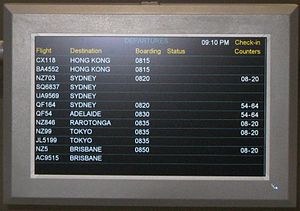Back in July of 2011, we made the Case against Codesharing. But lately, we’ve seen a few articles that have made us revisit the issue.
Codesharing is where the airline that operates a flight(operating carrier), allows a second airline(marketing carrier) to place its flight number on the flight, and sell it as if it was their own.
This is not to be confused with a traditional interline agreement, which covers ticketing and baggage, and the filing of combined fares. This allows airlines to work together more efficiently. But in interline, all carriers act as themselves.
When you add in codesharing, it is harder to figure out whose check-in counter and plane you are actually flying on. This is despite legal requirements the operating carrier must be identified on all itineraries.  There is no benefit to the customer of this sort of relationship. It only makes things more confusing.
Over the last few years, JetBlue has become well known for partnering with international carriers, allowing both interline agreements and one-way codeshares. JetBlue doesn’t really put its flight number on other airlines. This is because, for its business model, it doesn’t need to.
Since we wrote about this in 2011, the DOT has become a bit more gung-ho about rulemaking. It has adopted IATA Resolution 302, which governs baggage on tickets with multiple airlines, as DOT policy, with one minor modification…the Most Significant Carrier is the marketing carrier, not the operating carrier of a flight. This is less confusing for consumers who can be assured that the baggage rules are those of the airline listed on the ticket, not the airline who may be operating the flight.
In the end though, the best we can say is that if you want to live in a codeshare world, make sure you know who is operating the flight, whose rules apply, and hopefully you trust the experience offered by both airlines.
Related articles
- Qatar Joins the Tangled Web of oneworld Partners (crankyflier.com)
- Gulf airline Etihad partners with Air France-KLM (kansascity.com)
- Qantas & Emirates form extensive partnership (flightglobal.com)
- It’s The 21st Century, But I Can’t Pick My Seat When Booking A Flight Over The Phone (consumerist.com)

